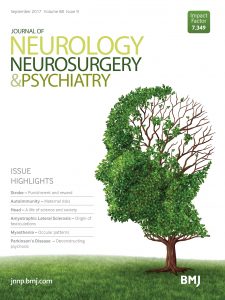 A bone researcher has lost three more papers for scientific misconduct.
A bone researcher has lost three more papers for scientific misconduct.
The new retractions bring Yoshihiro Sato’s total to 17 and put him on our Leaderboard.
According to the retraction notices, Sato asked the Journal of Neurology, Neurosurgery, and Psychiatry to retract three of his papers “due to scientific misconduct.” In the letter, Sato—who is corresponding author on all three papers—explained he included co-authors without their consent and that none of the other authors listed worked on the study or article.
In May, the editors issued expressions of concern while they investigated (1, 2, 3), and last month, the journal retracted the three articles.
Here’s the retraction notice for “Amelioration of osteopenia and hypovitaminosis D by 1alpha-hydroxyvitamin D3 in elderly patients with Parkinson’s disease:”
This article has been retracted. The editor received a letter from Dr Yoshihiro Sato retracting this article and two others also published in Journal of Neurology Neurosurgery and Psychiatry. Dr Sato states the reason for retraction as ‘due to scientific misconduct. All co-authors did not participate study design, data collection, data analysis, interpretation of data and drafting manuscripts in these 3 articles. Thus, all co-authors are honorary.’
Despite repeated requests for further explanation, we have not received any response from Dr Sato’s institution.
It was brought to our attention that several other journals have retracted articles by Dr Sato. Neurology published an article ‘Systematic review and statistical analysis of the integrity of 33 randomized controlled trials’ by Boland et al1 indicating that the data in those trials were not reliable. The data supplement for the article in Neurology lists the three papers published in Journal of Neurology Neurosurgery and Psychiatry providing evidence that the reported findings in those articles are unreliable.’
The paper, published in 1999, has been cited 79 times, according to Clarivate Analytics’ Web of Science.
The retraction notices for the other two papers are identical. Here are links to the notices and papers:
- “Efficacy of methylprednisolone pulse therapy on neuroleptic malignant syndrome in Parkinson’s disease,” published in 2003, has been cited 28 times. In 2004, a neurologist based in England questioned the study results and Sato defended his work.
- “Once-weekly risedronate for prevention of hip fracture in women with Parkinson’s disease: a randomised controlled trial,” published in 2011, has been cited eight times.
The expressions of concern are identical and simply state:
It has been brought to the attention of the Editors that the authors for this article may not have met the criteria of authorship. The issue is under further investigation.
The three retraction notices also mention a 2016 paper in Neurology by Mark Bolland of the University of Auckland, which cast doubt on 33 of Sato’s studies, including the three now-retracted papers. The previous 14 retraction notices for Sato’s papers list a range of issues, including plagiarism, problems with data, and lack of authorship consent. (When we spoke to Sato last year, he defended his research.)
Earlier this year, we contacted journals that have published Sato’s papers involving human trials, to see if they plan to take another look at his work. The responses from the seven journals that got back to us varied. Several journals said they investigated the papers in question and did not take action; another journal—Kurume Medical Journal—retracted one of Sato’s papers; and Stroke told us the journal does “not investigate issues of misconduct.”
Hat tip: Nancy Lapid
Like Retraction Watch? Consider making a tax-deductible contribution to support our growth. You can also follow us on Twitter, like us on Facebook, add us to your RSS reader, sign up on our homepage for an email every time there’s a new post, or subscribe to our daily digest. Click here to review our Comments Policy. For a sneak peek at what we’re working on, click here.
“Several journals said they investigated the papers in question and did not take action”
Wow.
just “wow”
We all know bisphosphonates (BPs) are potent anti-bone resorption drugs (aside from the crippling/terminal long term use side effects) but why make up data when it is clear BPs improve fracture risk and therefore mortality-associated fracture risk?
Dr Sato did not work alone, but he has taken the hit alone. For that alone I respect him, but he does not do science a service by taking ALL the blame……..
My impression from the systematic review is that it is unlikely many of these clinical trials took place at all. It is certainly much cheaper and quicker to fake a trial than to actually recruit and follow patients. Sato’s monstrous rate of publication likely could not have been achieved by actually doing trials. Given that, we don’t know whether he worked alone or not. It only takes one person to fake a trial and in fact it’s much safer done that way.
The systematic review raises grave doubts that (a) the given number of patients with the given indications could have been found at all, (b) that they would have survived and remained in the study at such high rates, and (c) that they could have been followed by the small number of listed personnel.
Agreed, but the researcher in question was on the boards on VERY prestigious journals such as the Journal of Bone and Mineral Research for several years.